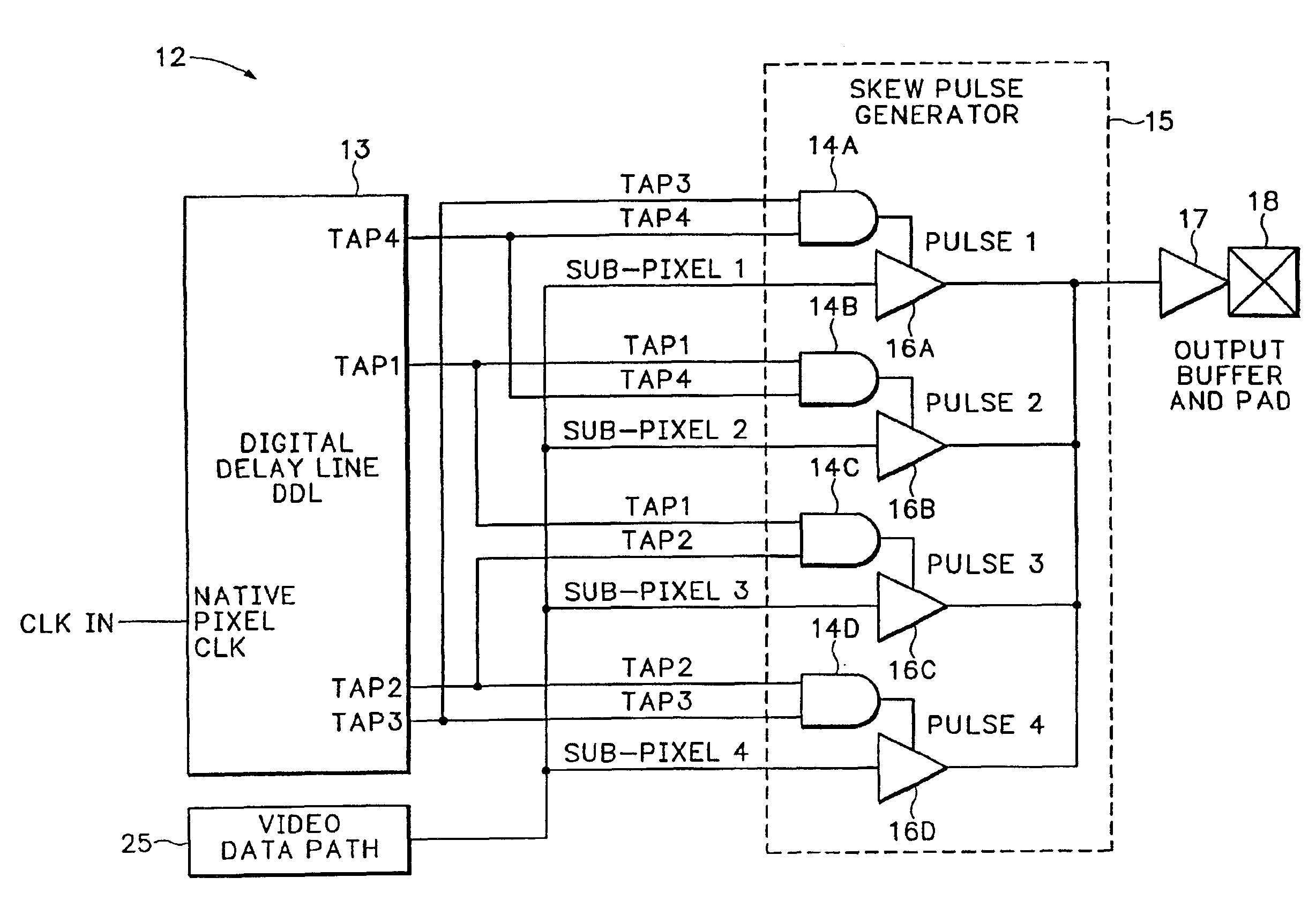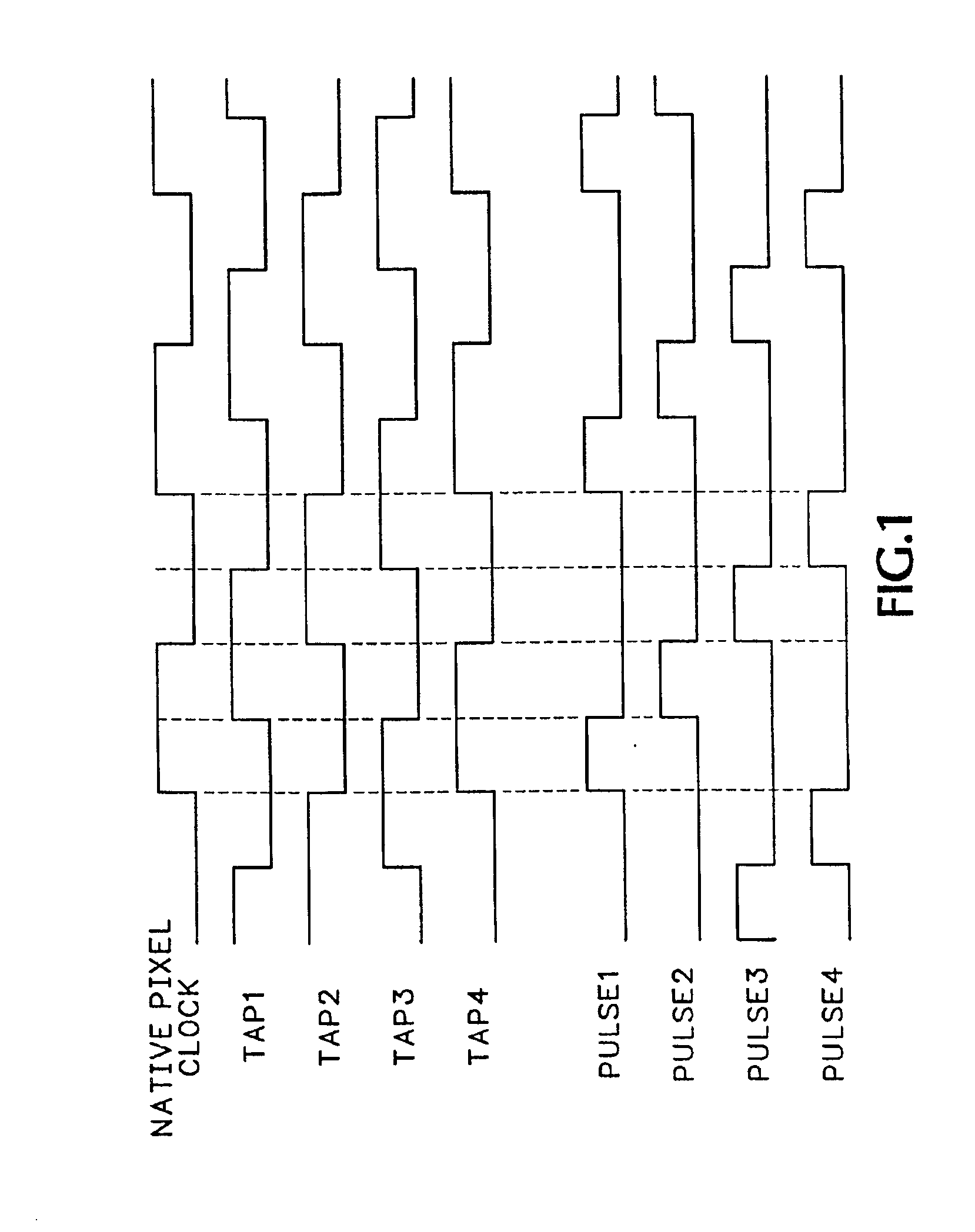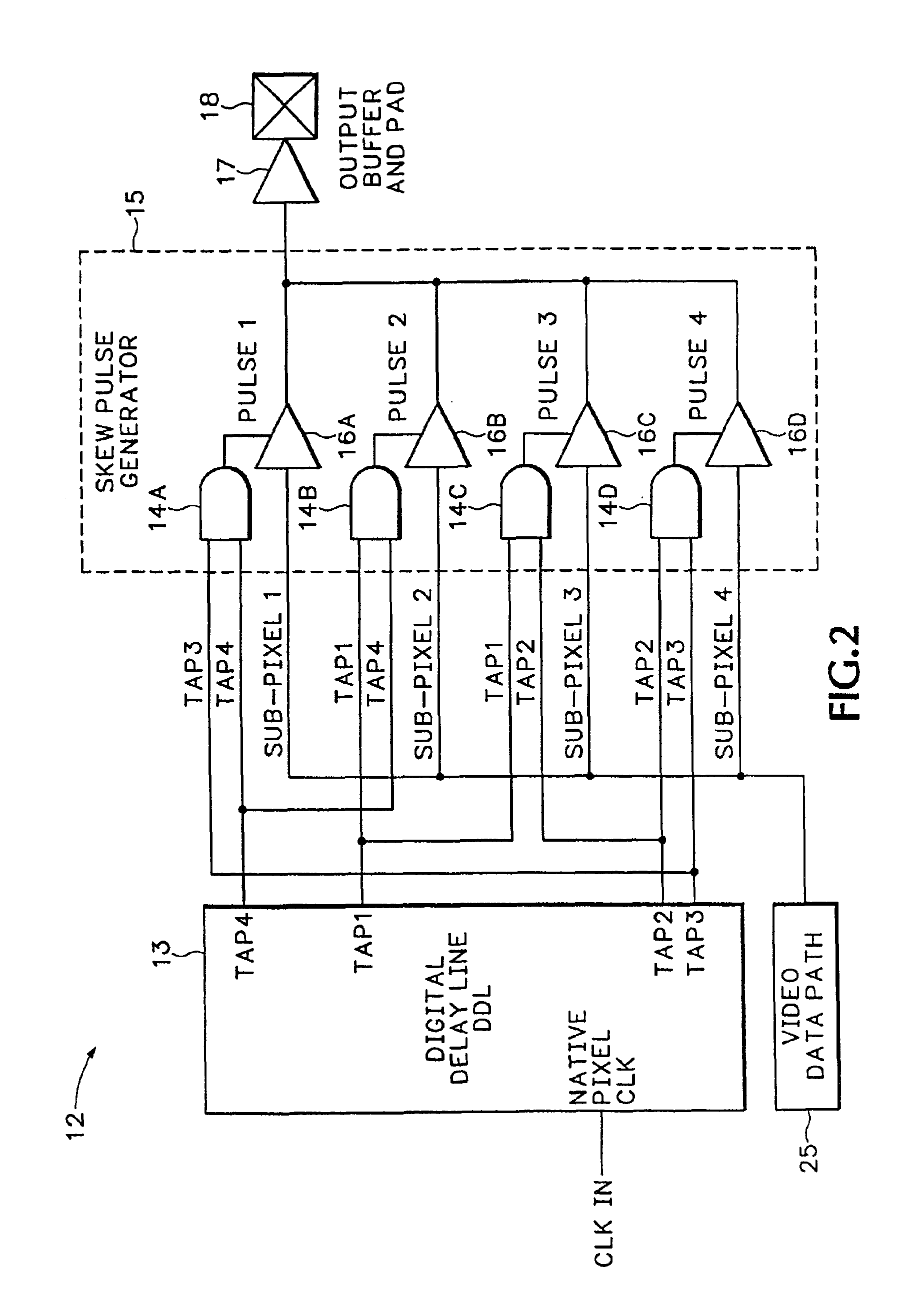Pulse width position modulator and clock skew synchronizer
- Summary
- Abstract
- Description
- Claims
- Application Information
AI Technical Summary
Benefits of technology
Problems solved by technology
Method used
Image
Examples
Embodiment Construction
Pulse Width Position Modulator
[0026]FIG. 1 shows a native pixel clock signal CLKIN used to generate multiple output subclock waveforms TAP1-TAPN, where for illustrative purposes, N=4. Each subclock is skewed by a different percentage of the CLKIN clock period. The skewed waveforms are used to generate multiple clock pulse trains that control the output of subpixels at resolutions higher than the clock signal. The example shown in FIG. 1 is for a N=4 digital delay line (DDL) circuit that generates four pulse trains PULSE1-PULSE4. The pulse trains PULSE1-PULSE4 control a video data output stream of subpixels for a ¼ subpixel resolution. The system is adaptable to provide any 1 / N subpixel resolution without requiring a higher clock frequency.
[0027]FIG. 2 shows a Virtual Clock Multiplier (VCM) circuit 12 that produces the four pulse trains shown in FIG. 1. The VCM 12 includes a DDL 13 and a Skew Pulse Generator (SPG) 15. The DDL 13 is an analog device that receives the native pixel cloc...
PUM
 Login to View More
Login to View More Abstract
Description
Claims
Application Information
 Login to View More
Login to View More - R&D
- Intellectual Property
- Life Sciences
- Materials
- Tech Scout
- Unparalleled Data Quality
- Higher Quality Content
- 60% Fewer Hallucinations
Browse by: Latest US Patents, China's latest patents, Technical Efficacy Thesaurus, Application Domain, Technology Topic, Popular Technical Reports.
© 2025 PatSnap. All rights reserved.Legal|Privacy policy|Modern Slavery Act Transparency Statement|Sitemap|About US| Contact US: help@patsnap.com



